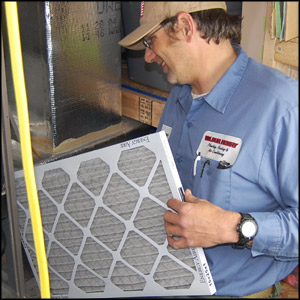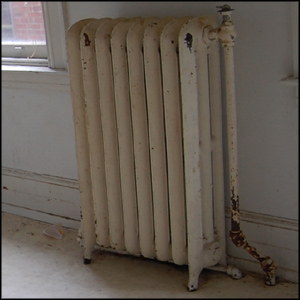What is Radiant Heat?
There’s nothing worse in the wintertime than turning on the heat and having parts of the room too hot and others still cold. Actually, let me retract that statement, cold tile floors on bare feet certainly rank up there. Baseboard heaters don’t do much to solve this problem, and let’s be honest, they’re pretty inefficient. That’s where radiant heat comes in.
Radiant heat = evenly distributed heat
Radiant heat will literally turn your floor into a heater through lines that run under the floor itself. What this means for you is that the days of cold floors in the winter could be a thing of the past. Since the entire floor is heated, it provides a nice even distribution of warmth to the entire room, so you won’t have cold spots on one side and blistering temperatures on the other. Radiant heat works great for surfaces like laminate or ceramic tiling.
The drawback of radiant heat is that it does take quite a bit of labor to install. The room where you want the radiant heat in needs to have lines run back and forth throughout the entire floor. Once you experience it for yourself though, you’ll never want to go back to traditional methods of heating again. If you want to learn more about radiant heat, don’t hesitate to call Wilbur Henry Plumbing Heating and A/C at 717-755-5461.
What is Radiant Heat? Read More »



 ducts insulated in unconditioned spaces where there is no heat.
ducts insulated in unconditioned spaces where there is no heat.
 your furnace is short-cycling (running only for 4-8 minutes then turning off, possibly with the fan still running) you are facing one of two problems; a dirty air filter or an incorrectly sized furnace. In general, for a 12-1400 square foot home, a 60-80,000 btu furnace would be required but it’s important to have a furnace installation technician that you trust to make sure you have the right specs when buying a new furnace. One of the worst things you can do, especially with newer high-efficiency furnaces, is to have too large of a furnace. High-efficiency furnaces are specifically designed to run longer and the wrong-sized furnace will end up short-cycling and causing you some possibly very expensive problems over the long term.
your furnace is short-cycling (running only for 4-8 minutes then turning off, possibly with the fan still running) you are facing one of two problems; a dirty air filter or an incorrectly sized furnace. In general, for a 12-1400 square foot home, a 60-80,000 btu furnace would be required but it’s important to have a furnace installation technician that you trust to make sure you have the right specs when buying a new furnace. One of the worst things you can do, especially with newer high-efficiency furnaces, is to have too large of a furnace. High-efficiency furnaces are specifically designed to run longer and the wrong-sized furnace will end up short-cycling and causing you some possibly very expensive problems over the long term.


